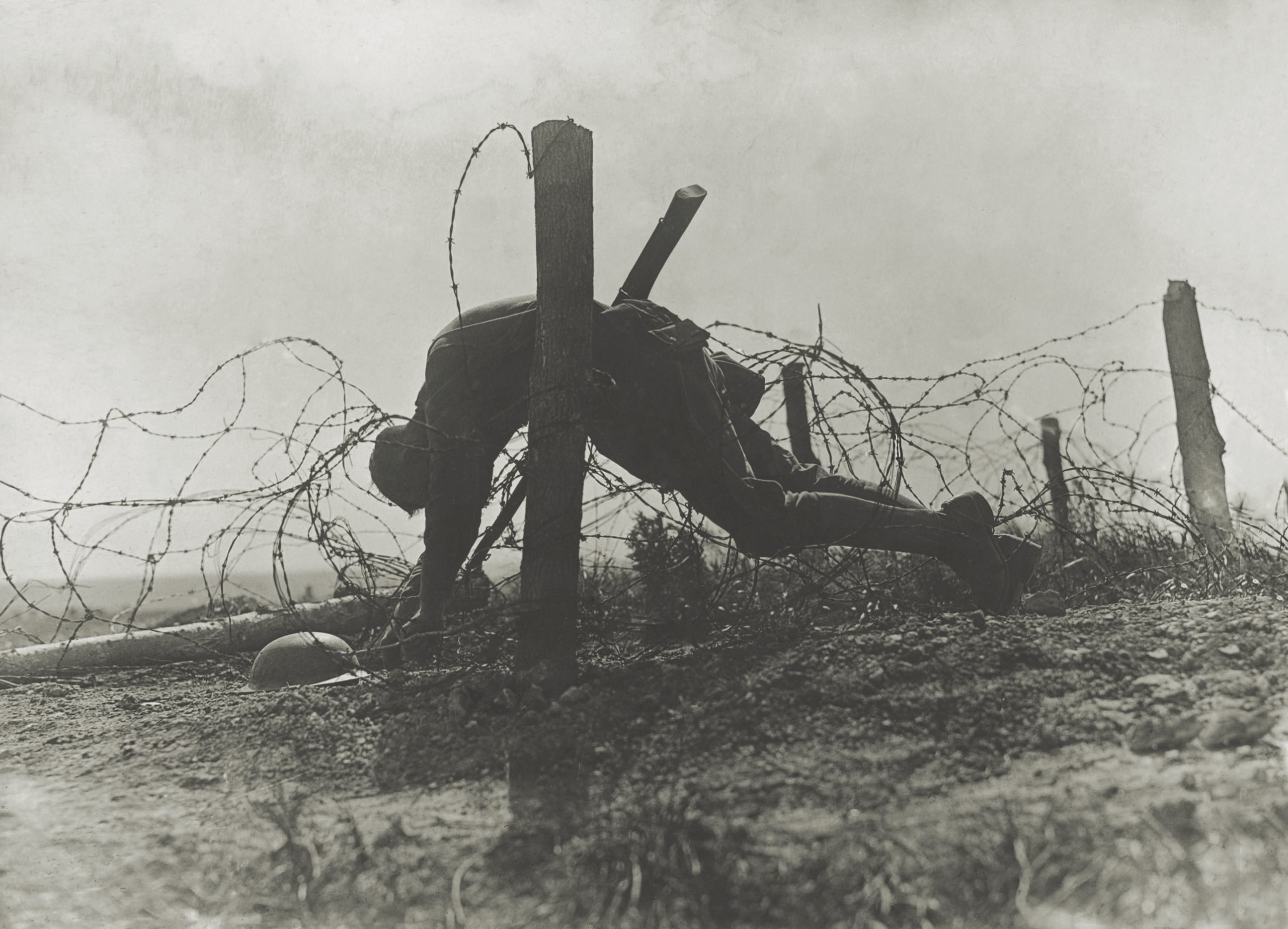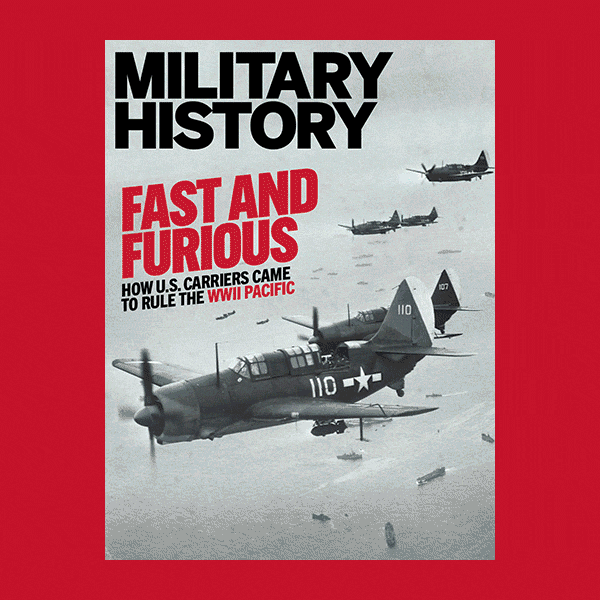People still regard World War I with horrified disbelief. That four-year “ecstasy of fumbling” killed some 10 million soldiers and perhaps as many civilians, numbers that defy comprehension. Shell-shocked governments had little to show for the fields of white crosses popping up on their pockmarked landscapes. Grieving families the world over wanted to know who was to blame for having sent their sons, fathers and husbands to die ghastly and useless deaths in what American diplomat and historian George F. Kennan termed “the great seminal catastrophe,” or Urkatasrophe (“original catastrophe”) to Germans.
Who indeed? And why? Over the decades since the guns of the—apologies to H.G. Wells—“War That Didn’t End War” fell silent, the writers of some 30,000 books, technical reports and scholarly papers have debated the chain of events prompting unprecedented historical, social, economic and technological consequences that left Eurasian politics radioactive through century’s end. New research continually adds to this library, often bringing more controversy than clarity.
That there were knights and knaves in all camps is a given. However, if they appeared to have acted like fools, scoundrels or madmen, judge them “in the context of their times, not ours,” urge historians, which sounds suspiciously like having to accept “it seemed like a good idea at the time” as an explanation.
Whether the war was inevitable or avoidable depends on which books one reads. Many stand by the notion that in the decades leading up to 1914 all Europe was enthusiastic about going to war, that its nations were armed camps, and that by amassing million-man armies it only fed what Australian historian Sir Christopher Clark has called “the illusion of a steadily building causal pressure.” In this version of the story imperial Germany was an emergent dynamo infused with visions of finding its well-deserved “place in the sun” and got into a race for colonies and naval superiority that dangerously upset the balance of power.
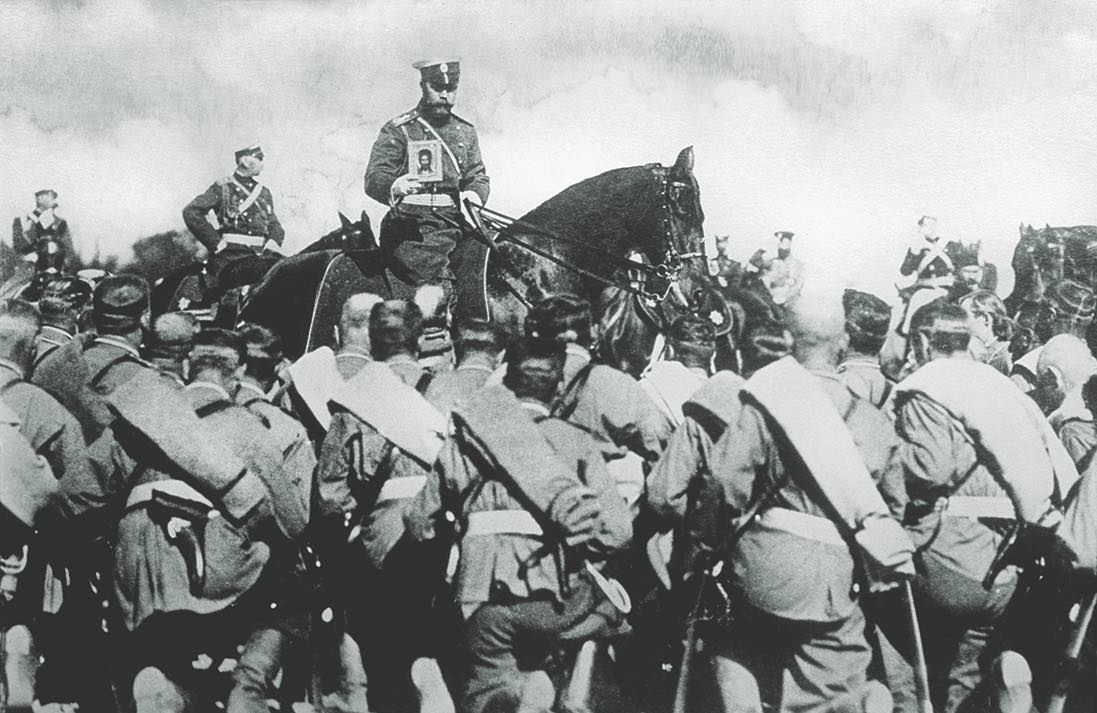
In what is known as the “Scramble for Africa,” from the mid-1880s up till the eve of World War I nearly 90 percent of the continent was colonized by Western European powers, primarily Britain and France. Though Germany fired the starting gun, its ambitions went unfulfilled. Chancellor Otto von Bismarck had convened the 1884–85 Berlin Conference for the express purpose of partitioning Africa in a manner designed to avoid stumbling into a war. The scramble itself was marked by a number of “international incidents” involving some combination of Germany, Britain or France, but these were resolved peacefully.
The concurrent naval arms race between Britain and Germany is the showpiece of the pro-war argument. By the time Germany effectively conceded that race in 1912, Britain had 61 top-of-the-line warships to Germany’s 31 of middling quality. A single brief sortie at Jutland in 1916—though a tactical victory for the Imperial German Navy—was enough to keep it docked for the duration of the war. An angry Vice Admiral Curt von Maltzahn was heard to fume, “Even if large parts of our battle fleet were lying at the bottom of the sea, it would accomplish more than it does lying well preserved in our ports.”
GET HISTORY’S GREATEST TALES—RIGHT IN YOUR INBOX
Subscribe to our HistoryNet Now! newsletter for the best of the past, delivered every Monday and Thursday.
France is often portrayed as thirsting for revenge after its humiliating 1870 defeat by Prussia, as well as being keen to recover Alsace-Lorraine. “Even a cursory knowledge of events shows there’s no truth to this claim,” counters Michael Neiberg, chair of War Studies at the U.S. Army War College in Carlisle, Pa. In his book Dance of the Furies: Europe and the Outbreak of World War I Neiberg drives a stake through the heart of this argument, revealing it was a lurid murder trial, not Alsace-Lorraine, that preoccupied the French public during the July Crisis of 1914. He cites polling showing that scarcely 4 percent of French citizens considered the region worth going to war over.
Scholarship by Notre Dame political scientist Sebastian Rosato confirms that neither Germany nor France noticeably increased the size of its army in the decade leading up to the war. So unprepared was France that some 95 percent of the artillery shells it fired in 1914 were made in Germany, while its textile mills could only produce blue uniforms. “There was no broad public support for war among the working classes of Europe,” Rosato notes. “Voters in prewar France and Germany voted consistently for anti-military parties.”
Nor did the families of the last four sovereign empires of Europe want war. The Hohenzollerns of Germany; the Habsburgs of Austria-Hungary, whose emperor Franz Joseph had paradoxically declared, “It is the first duty of kings to keep peace”; the Romanovs of Russia, notorious for shooting crowds of demonstrators; and the Three Pashas, whose faltering Ottoman empire was on life support when the war broke out. This group refused to go gently into the good night of constitutional monarchism, clinging to wealth and power by suppressing pent-up movements for political independence, social reform, religious freedom and democratization that had roiled their empires through the 19th century. Their populations were eager to get on with making what Oxford University historian Margaret McMillan terms “the transition from subject to citizen.” The thought a war might give these unruly masses the means and opportunity to do just that kept these families up nights—and rightly so. By 1918 a royal diaspora had cast them all to the wind.
In his book 1913: In Search of the World Before the Great War British-Australian historian Charles Emmerson describes a Europe celebrating a gilded age of peace, progress and prosperity. “It would be very, very hard to imagine this wonderful, glossy, wealthy, globalized, prosperous, civilized construct which had been built over the last hundred years…could be shattered by war in a moment of madness,” Emmerson notes. Indeed, as late as May 1914 British Undersecretary for Foreign Affairs Sir Arthur Nicolson was moved to declare, “Since I have been at the foreign office I have not seen such calm waters.”
But if “war fever” was absent in the years leading up to 1914, what explains the military parades mobbed by cheering onlookers, overflowing recruiting stations and trains crowded with smiling men waving goodbye to wives and mothers as captured in grainy films of the day?
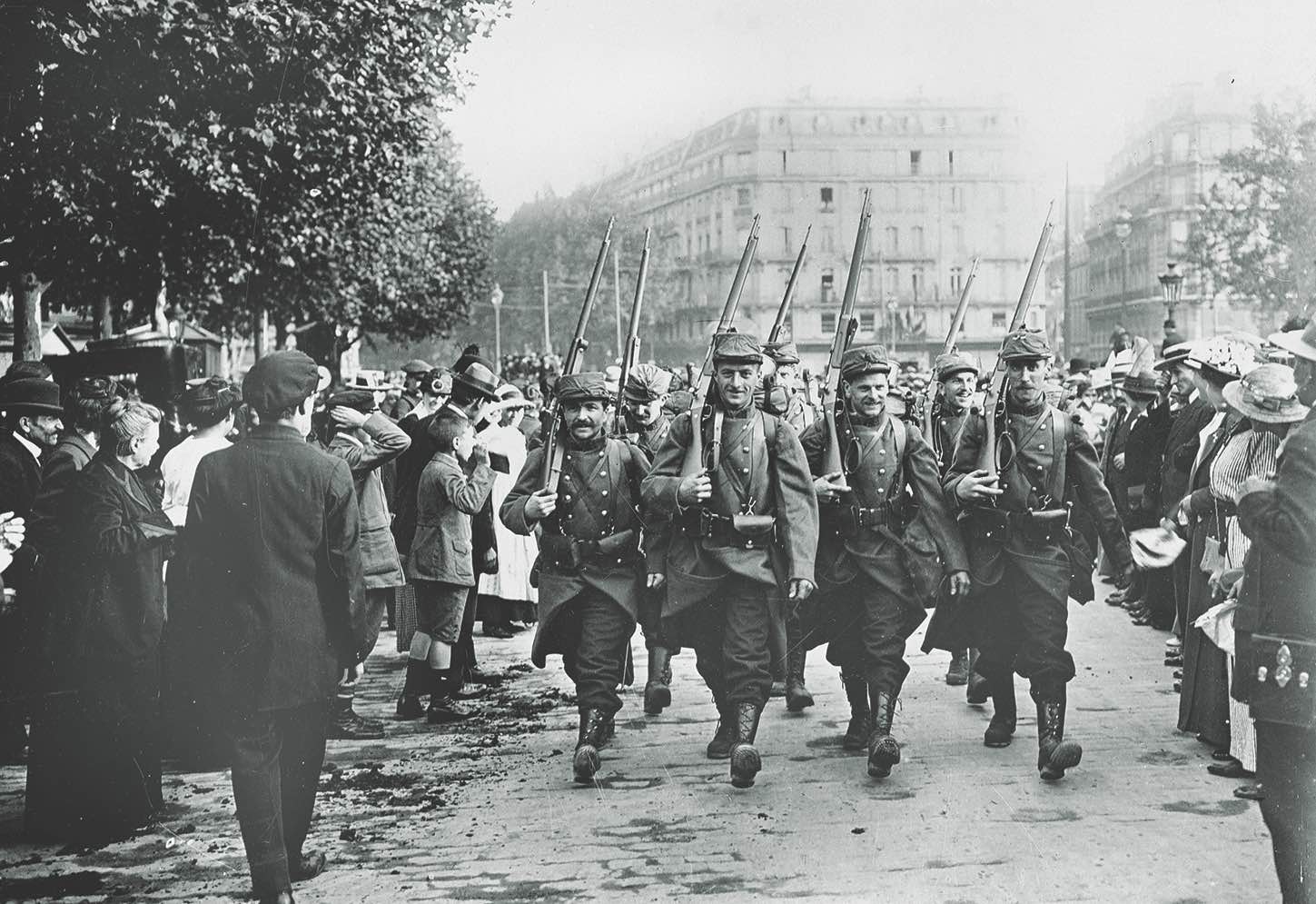
“It is critical to understanding World War I to understand how deeply the men who enlisted on all sides truly bought into the ‘short war’ myth,” Neiberg says. Since the idea of war was so far removed from the public consciousness when it suddenly broke out, every combatant government found itself rushing to assure its anxious populace it was acting purely in their defense—an argument made with varying degrees of credibility. Belgium could rightly make that claim. France made it a point of national pride not to strike the first blow. Indeed, it had withdrawn its army several miles from the German border at Alsace-Lorraine to avoid any incidents that might trigger gunfire.
Germany, meanwhile, loaded its men onto trains, claiming to be responding in kind to Russian mobilization. “We draw the sword with a clean conscience and with clean hands,” Kaiser Wilhelm II swore solemnly, although his military junta had trouble explaining why trains carrying a “defensive” army were heading toward Belgium, which hadn’t fired a shot in anger, rather than Serbia, where assassin Gavrilo Princip had killed Austrian Archduke Franz Ferdinand and wife Sophie in Sarajevo on June 28, 1914.
Generals in both the Austro-Hungarian and Russian armies had ample reason to fear that patriotic loyalty to a monarch who’d mistreated his populace in times past might not motivate men to answer call-up orders. They were wrong. Conscripts showed up by the millions. Standing shoulder to shoulder were capitalists, socialists, royalists, nationalists, peasants and princes, most of whom believed passionately they were fighting to defend their homeland from an unprovoked attack that threatened their nation’s survival. Who wouldn’t be eager?
Men were also quick to enlist because they believed just as fervently they would be home by Christmas, wearing medals and regaling the ladies with war stories. Such patriotic flimflam became an article of faith among the men who’d answered their respective country’s call and would haunt all who touted it. The kaiser promised his boys they’d be home “before the leaves fall” because faith in short, decisive wars was the bedrock of German military planning in 1914. Had Prussia not beaten Austria in seven weeks in 1866 and France in six months in 1870?
The commanders of all European armies had learned the wrong lesson from the relatively brief regional wars of the 19th century. Their observers had witnessed firsthand how technological innovation—the steady increase in range and rates of rifle fire, and the advent of early machine guns and artillery shells 10 times more powerful than Napoléon’s cannon balls—was making the battlefield increasingly lethal for soldiers. These were omens of a frightening trend that military establishments of every uniform misread wildly.
On Oct. 25, 1854, amid the Crimean War, the infamous charge of a British brigade of light cavalry into the muzzles of Russian cannons left 110 of the 600 horsemen dead and another 161 wounded. The survivors were immortalized for their gallantry. At the Aug. 16, 1870, Battle of Mars-La-Tour another “death ride” saw 800 hot-blooded Prussian cavalrymen charge headlong into the teeth of withering French fire. Half their number were shot from their horses. Such suicidal bravado aroused admiration. The 1904–05 Russo-Japanese War witnessed the largest land battle to date at Mukden but remains renowned for tiny Japan’s masterful defeat of giant Russia’s imperial fleet in the decisive encounter at Tsushima Bay (see “Japan’s Trafalgar,” by Alan George, in the January 2022 Military History).
Incredibly, the message apparently gleaned by military observers was that troops infused with patriotic élan could overwhelm even the stoutest enemy defenses. This naive, if not callous, calculation meant the only thing inevitable about World War I was its horrendous death toll.
At the close of the 19th century Polish entrepreneur and military theorist Jan Gotlib Bloch sought to methodically quantify modern warfare. His conclusions came as the mother of all inconvenient truths to military planners of the day. In essence he declared war had become just too big, too destructive, too deadly, too expensive and too unpredictable to be an effective instrument of “politics by other means.” Bloch was ignored. In 1914 machine guns turned the valiant charges of troops across open country into obscene massacres at up to 600 rounds per minute. Even more were blown to pieces by massed rapid-fire artillery. Germany alone sustained more than a third of all its casualties in the first three months of the conflict. Thus the trenches have become the icon of World War I.
No discussion of how the war got started omits the Schlieffen Plan. That German military scheme to quickly knock France out of a future war proved more than they could handle. The Allies’ 1914 “Miracle of the Marne” stopped the kaiser’s gray-clad divisions within 50 miles of Paris. Failure of the plan is considered Germany’s first misstep on the road to disaster. Yet, Rosato argues, Field Marshal Alfred von Schlieffen’s proposal, written a decade earlier, was never more than a “theoretical paper exercise” to justify expansion of the German army. The plan, such as it was, was designed only to hold France in check while Germany took on its real enemy, Russia; there was never supposed to be a left hook around Paris. In 1914 the Germans had planned only a series of small defensive firefights, but given the rapid French retreat, their troops were compelled to follow. Thus the operation was a classic case of mission creep that only looked like the Schlieffen Plan.
By the end of 1914, with millions dead and no end in sight to the killing, the “short war” promise lay exposed for the murderous myth it was. So why didn’t the opposing forces stop the insanity and seek a negotiated settlement? Because by then each combatant nation believed it was fighting a defensive war it had to win if it were to survive. As in all wars, the death of comrades only made those still alive more determined to kill the enemy in revenge. “The intensity of the hatred already engendered on all sides made peace impossible,” Neiberg says.
So the war ground its bloody grist for three more years. Historians earnestly discuss the various opportunities that arose for one side or the other—especially Germany—to have struck a decisive blow that would have “won” the war. Yet it is unrealistic to believe Germany had the capability to win the war as its leaders envisioned winning. Their opposite numbers in London, Moscow and Washington would have had zero tolerance for the German tricolor flying atop the Eiffel Tower.
Meanwhile, anchored across the English Channel was a navy with a three-century tradition of scoring war-winning victories over rival navies. The largest maritime force on earth, Britain’s Royal Navy, projected and protected the power of the then largest empire on earth. Had Germany triumphed on the Continent, Berlin would have had no means of impeding Britain from using its vast human, financial, natural and industrial resources to wage war. Royal Navy ships seized or sank a quarter of the kaiser’s merchant shipping in just three months, while Germany’s submarines did little more than make serious enemies.
Whether czarist or communist, Russia has always been vast. No nation then or now has ever possessed the military scope to conquer it. That’s why Germany enabled an unknown and unemployed malcontent named Vladimir Lenin to do its dirty work, allowing the military brain trust in Berlin to conveniently avoid the insurmountable problem of putting German boots on the ground in Moscow.
The United States, for its part, was simply too rich for Germany to take on. By the outbreak of the war its factories were already producing a quarter of the manufactured goods used by Europeans without breaking a sweat. An isolationist Congress kept it out of the fray as long as possible despite growing public unease with selling war materiel to Germany. When the Zimmerman Telegram made headlines, however, public opinion shifted overwhelmingly in favor of taking the war to the villains they were certain had started it all—the Huns.
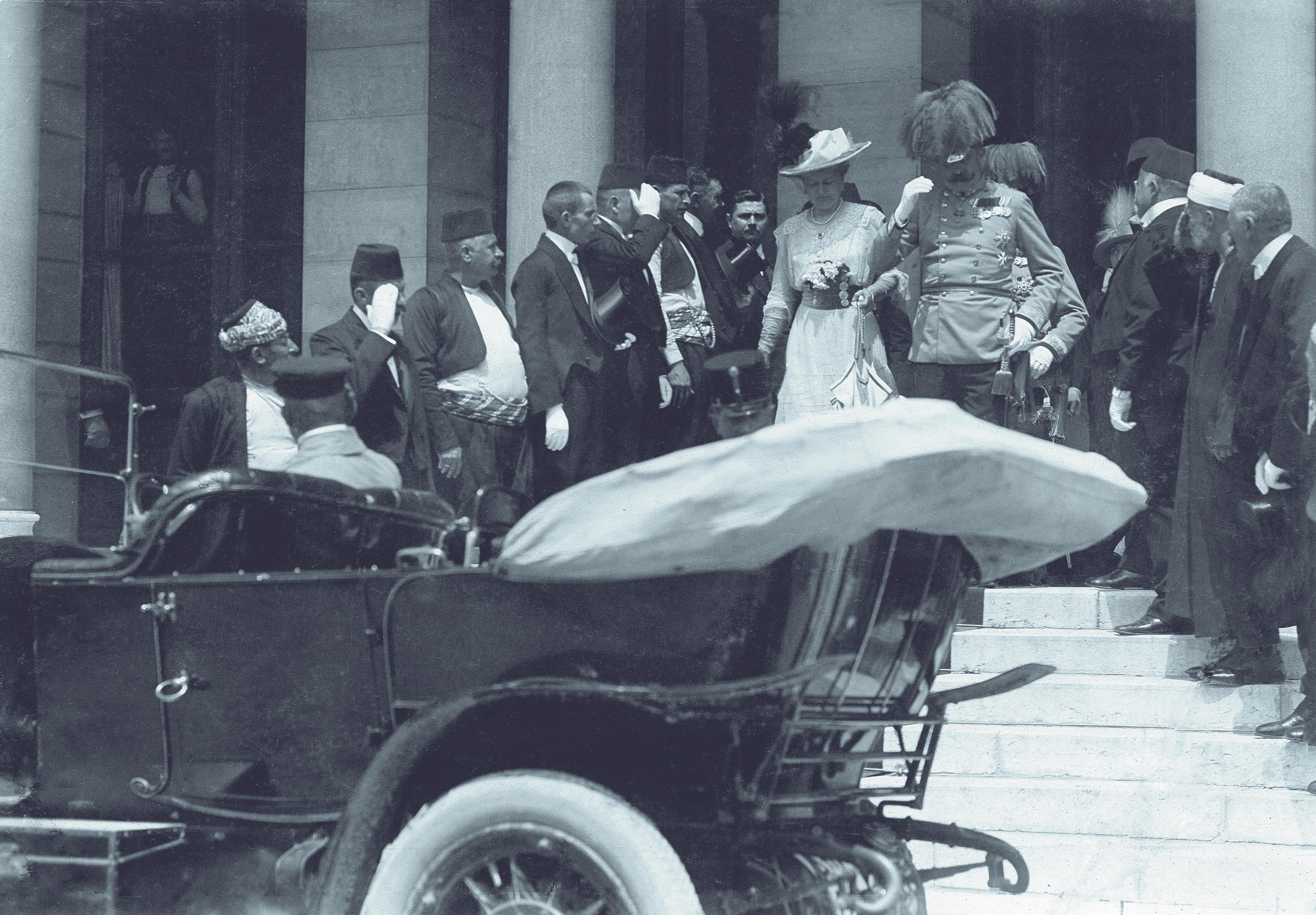
With the benefit of hindsight, we know what would have happened had the Schlieffen Plan worked in 1914, as it did in the summer of 1940 when the Wehrmacht employed an updated version to roll over France in a matter of weeks. Adolf Hitler and his generals then proceeded to slavishly repeat all of Erich Ludendorff’s greatest mistakes, ultimately reducing Germany to a smoldering ruin in fighting the same well-armed enemies and the same daunting geopolitical realities with the same predictable result. The scale was vastly greater, and it took longer, but the outcome only seemed doubtful at the time.
Even more words have been written about how the war ended than how it began. The 1919 Treaty of Versailles initially placed all the war guilt on Germany’s shoulders. Later revisions downgraded it to an unfortunate accident, with no one country to blame—call it the “Oops War.” Then, in 1961, German historian Fritz Fischer published a damning 900-page indictment of his nation’s role in starting Europe’s “March of Folly,” reviving the debate with a vengeance. Exhibit A was the kaiser’s infamous “blank check” of support that egged Austria-Hungary into punishing Serbia for the assassination of Franz Ferdinand.
But American historian Samuel R. Williamson Jr. is among those who reject what he calls the “German Paradigm.” Instead, he makes a compelling case that Austro-Hungarian Emperor Franz Joseph I and his foreign minister, Leopold Berchtold, played the kaiser like a fiddle, cravenly manipulating the blank check to launch not a punitive raid but an all-out attack on Serbia. It’s worth noting that despite losing nearly a third of its population during the war, the highest percentage of any nation, Serbia emerged a winner at the peace talks. The postwar borders ultimately expanded it into the Slavic superstate of Yugoslavia. Seen from that perspective, Williamson brands the Sarajevo assassination “the most successful terrorist act of all time.”
Any implied villainy was shared, historian Clark contends. “While each nation had a limited understanding of the complexity of what was unfolding,” he says, they all came to see Balkan volatility as offering beneficial strategic circumstances for advancing their respective political agendas. German diplomat Kurt Riezler summed up the attitude in a letter to his fiancé: “The war was not wanted, but still calculated, and it broke out at the most opportune moment.”
Is it because of our lingering contempt for World War I that we celebrate World War II, the deadliest six years in human history, as the “Good War”? It killed at least three times as many people, mostly civilians, with fire-bombing, concentration camps and nuclear weapons, among other horrific means. That its end was celebrated with Victory Days (as in, “We’re glad we won”) versus the end of World War I, which was dubbed Armistice Day (as in, “We’re just glad it’s over”) speaks volumes. Speaking of volumes, there will undoubtedly be more of those too, and the debate will continue.

